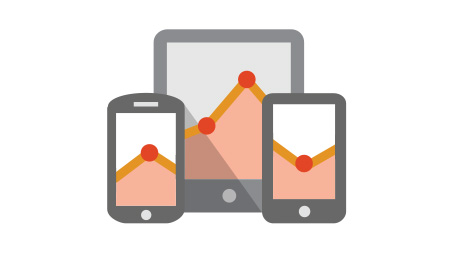Now that smartphones are everywhere, there’s a huge opportunity for businesses to learn more about how their customers behave when on the move and leverage this data to increase engagement and sales. But marketers and business leaders are not leveraging mobile data to its fullest extent.
According to a recent study performed by Neolane and The Direct Marketing Association, only 23% of marketers access location-based data and 13% access mobile loyalty data. This can be due to various reasons, but many times businesses just don’t know where to start or are measuring the wrong metrics.
The successful analysis of mobile data entails a change in mindset from typical online analytics, the ability to assess multiple channels within the mobile channel, and integration of this data into cross-channel customer analysis.
Leverage Online Analytics – But Change Everything
Many data-driven marketers cut their teeth in the online analytics game, and their natural predilection is to simply translate those metrics to their mobile properties. Using online metrics may be a decent place to start, but engagement on smartphones is extremely different than desktop (and even tablet) engagement and requires a change in mindset.
The typical online call-to-action is a click that leads to a form fill, an e-commerce purchase, or another article. But on a smartphone, the user typically searches for a location, clicks to call, or interacts via social media; rarely does the user navigate through a single site for an extended amount of time or fill out long forms. Thus traditional online metrics such as time on site, page views, bounce rate and unique visitors must either be altered to cater to the mobile asset, downgraded to lower importance, or discarded completely. And more focus should be placed on metrics like location where the mobile asset was accessed, usage by loyal users, phone calls made, and conversion rates.
Marketers should analyze their own behavior on their smartphones, understand what actions are important, and apply those metrics to their customers.
Measure the Multiple Tactics Within Mobile
One of the reasons why mobile is so difficult and cumbersome to measure is that there are many tactics within the channel, causing a deluge of valuable data that can be at times overwhelming. But it’s important to understand how your customers are engaging with your brand across all mobile touchpoints.
Mobile messaging is the most pervasive, as this is applicable to both smartphone and dumbphone users, and gives business unmatched reach. Text message open and click-through rates are important, but tracking users’ locations and measuring the response rates when SMS is leveraged in other advertising media such as print, outdoor, TV, and radio can lead to even more valuable cross-channel customer data.
Mobile websites are most analogous to online websites, and depending on the kind of mobile website you have, metrics such as unique visitors, time on site, and ad click-through rates hold some value. But aspects native to the mobile experience like the type of smartphone with which the site was accessed and click-to-call conversion rates may be more useful.
Key metrics to measure effectiveness of mobile apps include number of downloads, number of loyal users, user navigation paths, app crashes, conversion rates, and many more.
Now layer on the measurement of location-based services (such as Google Maps, Yelp, or Foursquare), QR code usage, mobile ad performance, and any mobile commerce initiatives that your company might be working on and you’ll have a ton of data about your customers when they’re on the move. Understand how this data works together and you’ll form powerful mobile user profiles that you can leverage to drive sales.
Integrate Analysis Across Channels
Now that you have all of this mobile data on your customers, the next step is integrating it into your existing customer analysis, which may consist of online behavior, purchase history, and persona analysis. By no means is this easy, but understanding how your customer interacts with your business both on- and off-line will help you really understand what drives purchase behavior.
The need for this kind of cross-channel customer analysis has spawned the buzzword “big data”, which is ever so popular now. Business intelligence tools from companies like SAS, Cloudera, and MicroStrategy allow you to combine your mobile data with other analytics to distill insight into customer behavior and drive business outcomes.
Who’s Doing This Well?
Retailers are prime candidates to leverage mobile data to drive sales, and Starbucks has been on the forefront of using mobile marketing to bring coffee drinkers into their stores and capture data on these customers.
Starbucks uses mobile ads to increase demand for their products and engages customers via mobile tactics like SMS, QR codes, and augmented reality. But the true power of their mobile strategy comes into play with their loyalty app, which allows customers to pay for purchases and gain loyalty points, thus closing the customer loop. They use all of this data to really understand their customers and continue to drive them into their stores.
The continued growth of smartphones will increase the importance of understanding your mobile customer. Though the volume of mobile data may be overwhelming, understanding how your customer interacts with your brand on the go can give you extremely helpful insight into how best to engage them to drive sales.


